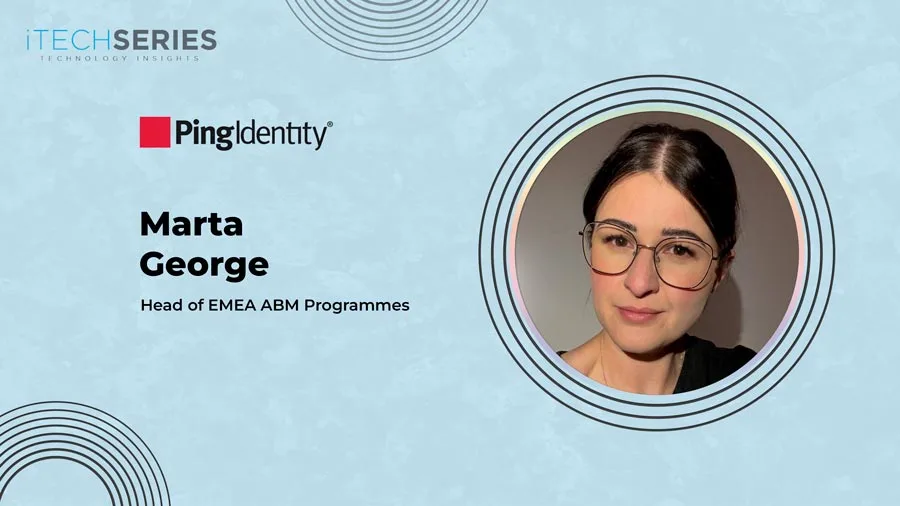Join us for an insightful interview with Melissa Vadasserril, Director of Product Marketing at Justworks, as she shares her unconventional journey in product marketing, her strategies for effective go-to-market plans, and the importance of cross-functional collaboration in achieving successful product launches.
Thank you for being a part of this interview series, Melissa. Tell us a bit about yourself and your journey in product marketing.
Thank you for having me as part of this interview series! My journey into product marketing has been an interesting and somewhat unconventional one. I actually began my career in retail tech sales, which may not seem like a typical starting point for a product marketer. However, it was during this time that I developed a deep appreciation for the importance of understanding customer needs and pain points first-hand.
My experience in direct sales, with its emphasis on one-on-one customer interactions, sparked my interest in product marketing. It gave me valuable insights into how products are perceived and used in real-world scenarios. This foundation proved invaluable while I was at Verizon, where I took on a hybrid role that blended elements of product management and marketing. In this position, I had the opportunity to lead Verizon’s initial venture into small business solutions, which was an exciting challenge that further honed my skills in product strategy and go-to-market planning. From there, I moved into a more traditional product marketing role within the company, leading B2B GTM and eventually B2C GTM. Most recently, I’ve had the privilege of leading product marketing teams at various SaaS companies, where I’ve been able to apply and expand upon the customer-centric approach I developed early in my career. This journey has given me a unique perspective on the interplay between sales, product development, and marketing, which I find invaluable in my current role as a product marketing leader.
Can you walk us through your approach to developing a successful go-to-market (GTM) strategy for a new product launch?
When developing a go-to-market (GTM) strategy for a new product launch, I always begin with the end in mind. This approach starts by asking critical questions: What pain points will this product solve for the customer? What tangible changes will customers experience as a result of this product or feature? Why should they care about it? These questions form the foundation of a customer-centric GTM strategy. I collaborate closely with product and design teams during the discovery phase to answer them. This deep dive into customer needs and product capabilities allows me to craft a narrative that resonates with both customers and sellers, effectively solving how we message and position the solution. Understanding the customer’s journey and the transformative impact of our product helps me define not just the marketing strategy, but also the level of education and support our sales team will need at launch.
With this customer-focused foundation in place, I develop a comprehensive GTM plan that typically includes several key components. First, I create a detailed timeline that outlines all pre-launch, launch day, and post-launch activities, ensuring all teams are aligned on critical milestones. Next, I develop clear, compelling messaging and positioning highlighting the product’s unique value proposition, tailoring it for different customer segments and channels. Depending on the launch, I might also focus on creating a robust sales enablement program, including training sessions, battle cards, demo scripts, and FAQs to equip our sales team with the knowledge and tools they need to effectively sell the new product. Additionally, I coordinate a mix of marketing activities from content creation, and digital campaigns to events and PR initiatives designed to generate awareness and demand. Throughout this process, I maintain open lines of communication with all stakeholders, including product, sales, customer success, and leadership teams, to ensure everyone is aligned and prepared for a successful launch. This holistic approach, grounded in customer needs and supported by cross-functional collaboration, has consistently led to successful product launches and rapid market adoption.
How do you manage cross-functional collaboration between product, marketing, sales, and customer success teams when launching a new product or service?
Managing cross-functional collaboration between product, marketing, sales, and customer success teams during a product launch is all about early, frequent, and transparent communication. I believe in initiating dialogue as soon as a new product or significant feature is on the horizon, putting it on the radar of all teams, even if it’s just at a high level. From there, I implemented a tiered approach to communication and involvement, intensifying as we hit critical milestones like proof of concept, alpha testing, and beta releases.
Feedback is a two-way street. It’s not just about informing frontline teams of upcoming changes; it’s about actively seeking their input. With their daily interactions, sales and customer success teams provide invaluable insights into customer needs and pain points. In the past, I’ve found it helpful to create formal channels for this feedback to flow back to the product team, ensuring customer voices are heard throughout the development process.
As the launch date approaches, I increase the frequency and depth of cross-functional meetings. These sessions keep all teams updated, allow for discussion of potential challenges, and provide opportunities for each team to contribute to the launch strategy based on their expertise. This collaborative approach ensures that each team feels invested in the product’s success, understands its role in the launch, and is equipped with the knowledge they need to execute effectively. The result is not just smoother launches, but products that better meet customer needs and are more successfully adopted in the market.
How important are voice of the customer programs in your product development and improvement process?
Voice of the customer (VoC) programs are absolutely crucial in the product development and improvement process. In my experience, neglecting customer feedback is akin to building in a vacuum-a practice that’s not only wasteful of time and resources but also woefully ineffective in today’s customer-centric market.
The importance of VoC programs cannot be overstated, but their implementation requires nuance and strategic thinking. One key principle I’ve learned is that a single customer’s experience, no matter how influential, should not dictate the entire product roadmap. I’ve witnessed situations where product teams reacted hastily to feedback from a high-profile customer who had the ear of leadership. While such feedback is valuable, it’s critical to use it as directional input rather than a definitive guide. The goal should be to investigate whether this feedback represents a broader customer experience or a unique use case.
To get a more comprehensive view, I’ve found that sales and customer success teams are invaluable partners in the VoC process. These teams interact with customers multiple times daily and can provide a wealth of real-time insights. I make it a priority to establish strong relationships with these teams and create formal channels for them to share customer feedback regularly. Their on-the-ground perspective helps validate or challenge our assumptions about product features and improvements.
For products with broad applications, it’s essential to segment your customer base and identify your ideal customer profiles (ICPs). In my experience, targeting 2-3 ICPs is often a good starting point. This approach allows for more focused development efforts while still addressing a significant portion of your user base. It’s a balancing act-you want to avoid the trap of trying to be everything to everyone, which can lead to a diluted product that excels for no one.
“With the voice of customer programs, one key principle I’ve learned is that a single customer’s experience, no matter how influential, should not dictate the entire product roadmap.”
Can you tell us about your most memorable product GTM experience?
One of my most memorable product GTM experiences was leading the launch of Shutterstock’s first music subscription.
This launch stands out not only because it significantly outperformed our expectations, but also because it exemplified the power of cross-functional collaboration and relationship building.
As the lead for this initiative, I worked closely with both the product and performance marketing teams. The synergy we developed was crucial to the launch’s success. Our product team had created a robust offering, and my role was to ensure that we communicated its value effectively to our target audience. Working hand-in-hand with the performance marketing team, we crafted a strategy that would maximize visibility and drive adoption. The launch day arrived, and we watched with excitement as the metrics started rolling in. The subscription’s performance exceeded our projections, validating our collaborative approach and meticulous planning. Seeing all the pieces come together – from product development to marketing execution – and drive tangible results was incredibly satisfying. It reinforced my belief in the importance of strong cross-functional relationships in delivering successful GTM strategies.
While the Shutterstock launch was a highlight, another memorable experience came from my time at Verizon, where I led the consumer GTM team. This role put me at the helm of holiday promotional activities and new pricing plan launches – a different kind of challenge that tested our team’s agility and coordination skills. The holiday season, particularly around Thanksgiving and Black Friday, was always a whirlwind of activity. We often had to roll out promotion changes across multiple channels within hours, requiring an unprecedented level of coordination and precision.
The scale of these operations was massive – sometimes managing upwards of 30 promotions over a single holiday weekend. Preparing our field teams for these intense periods was a colossal undertaking. These experiences taught me invaluable lessons in resilience, adaptability, and the critical importance of clear communication under pressure. While different from a traditional product launch, these high-stakes, time-sensitive GTM moments honed my skills in managing complex, multi-faceted marketing initiatives and reinforced the importance of having a well-prepared, nimble team ready to execute at a moment’s notice.
You’ve worked with both field teams and leadership. What strategies do you use to ensure that sales enablement efforts are aligned across different levels of the organization?
I’ve found that a segmented briefing structure works really well in relaying information. Like I mentioned previously, begin with the end in mind- what is your desired outcome for this launch? What do sellers, customer success teams, and leaders need to know? An example of my approach would look something like this:
For field teams
- Provide detailed, practical information that directly impacts their day-to-day interactions with customers.
- Focus on product features, use cases, and customer pain points.
- Create easily accessible, bite-sized content that can be easily accessed and quickly reviewed before or during client meetings.
- Emphasize consultative selling techniques and industry-specific knowledge.
For managers
- Emphasize how the new product or feature fits into broader sales strategies and team goals.
- Provide tools and frameworks for coaching their teams on the new offering.
- Share competitive intelligence and market positioning information to help them guide their teams’ approach.
For leadership
- Focus on high-level strategic implications, market opportunities, and potential revenue impact.
- Provide concise summaries and key talking points for investor relations and high-level customer interactions.
- Offer insights into how the new offering aligns with long-term company vision and goals.
What metrics do you closely track to evaluate the effectiveness of a GTM rollout?
When evaluating the effectiveness of a GTM rollout, I closely track several key metrics across different business areas. This can vary based on who the feature is solving for – when it’s an acquisition driver, I will lean more heavily into performance metrics, if it’s a retention driver, I’ll lean more into customer feedback and NPS. And- as a product marketer, I’m always thinking about product adoption.
Here’s an overview:
Sales Performance Metrics
- Revenue growth: Track overall revenue and revenue specifically attributed to the new product/feature.
- Win rate: Monitor any changes in deal closure rates.
- Average deal size: Look for increases in deal value.
Product Adoption Metrics
- Activation rate: The percentage of customers using the new product/feature.
- Usage frequency: How often do customers engage with the new offering (and does that match the expectations identified when creating the GTM strategy)?
- Feature utilization: Which specific aspects of the product are being used most?
Customer Satisfaction Metrics
- Net Promoter Score (NPS): Gauge overall customer satisfaction and loyalty.
- Customer Satisfaction Score (CSAT): Measure satisfaction with the specific product/feature.
- Churn rate: Monitor any changes in customer retention.
- Expansion revenue: Track upsells or cross-sells related to the new offering.
Sales Enablement Effectiveness
- Training completion rates: Ensure sales teams are engaging with enablement materials. It’s helpful to compare this against how confident sellers feel about the new product to understand if there’s a training opportunity.
- Content utilization: Track which sales enablement materials are being used most frequently. Tools like Highspot can be helpful here!
- Time to productivity: Measure how quickly new reps can effectively sell the product. I like to use Gong to gauge this.
There are obviously many more metrics to think about, including marketing performance, competitive position, LTV… the list goes on! But these are the high-level metrics I focus on as it relates to GTM.
In your experience, what are the most effective ways to integrate customer marketing with product marketing to drive retention and loyalty?
Integrating customer marketing with product marketing is crucial for driving retention and loyalty. These functions sit together in my organization for this very reason!
In my experience, the most effective approaches center around creating a unified customer journey that aligns both teams’ efforts. This foundation enables strategies like implementing voice of the customer programs and/or Customer Advisory Boards, developing collaborative content that serves both acquisition and retention goals, and ensuring consistent messaging across all customer touchpoints. Leveraging product usage data to inform both development and engagement strategies is also key. Establishing cross-functional teams can foster better collaboration and customer-centric decision-making. Additionally, implementing a tiered loyalty or referral program that rewards both product usage and brand engagement can significantly boost retention. The overarching goal is to create a seamless feedback loop where customer insights continuously inform product development and marketing strategies, ultimately delivering more value to customers throughout their lifecycle. By breaking down silos between teams and fostering a customer-centric culture, you can create a more cohesive experience that reinforces product value and drives long-term loyalty.
As a marketing leader, how do you keep your team members constantly motivated and aligned toward the marketing goals?
I’ve found that strategically leveraging my team member’s strengths is the key to keeping them motivated and aligned with our goals. I focus on identifying each team member’s unique “superpowers” through regular one-on-one interactions, performance reviews, and careful observation of their work. This deep understanding allows me to match their skills to projects where they can truly excel and drive significant value. For instance, I might assign data-driven campaigns to analytically minded team members, while those with exceptional writing skills might lead content creation initiatives. This approach boosts individual performance and enhances overall team productivity.
An important note: I don’t just match current skills to tasks – I also look for opportunities that allow team members to grow and develop new abilities. This keeps them engaged and continuously evolving in their roles. I encourage cross-functional collaboration and always strive to build a diverse team that can learn from each other and leverage their collective strengths to achieve our marketing objectives more effectively.
By aligning individual goals with team objectives and empowering decision-making in areas of strength, I create a sense of purpose and trust within the team. Recognizing and celebrating achievements reinforces confidence and motivation. This approach naturally leads to higher motivation levels as team members can clearly see the impact of their contributions. Ultimately, this strategy not only keeps the team aligned with our marketing goals but also fosters a more innovative and effective marketing environment, where each individual feels valued and challenged in their role.

Justworks simplifies business growth, enabling entrepreneurs to focus on what matters. With an intuitive platform, 24/7 customer support, and PEO capabilities, Justworks provides seamless payroll, HR tools, and compliance assistance. By managing payroll and HR tasks, Justworks allows businesses to work fearlessly and pursue their passions, leveling the playing field for small businesses and fostering growth and confidence.
Melissa is a dynamic tech marketing leader leader with over 17+ years of experience in go-to-market strategy, sales enablement, and marketing operations. With a strong B2B and B2C background, Melissa excels in identifying business opportunities and developing effective strategies. Melissa holds a Bachelor of Business Administration with a focus on Marketing from Strayer University and is currently an Ambassador for Product Marketing Alliance.











